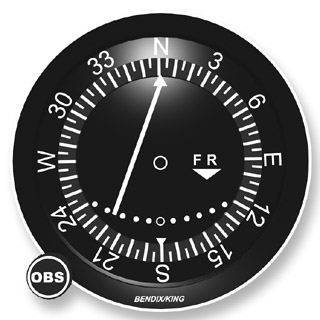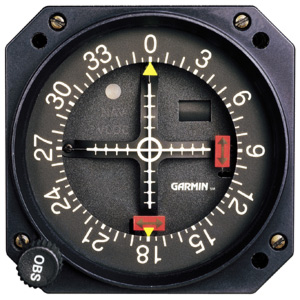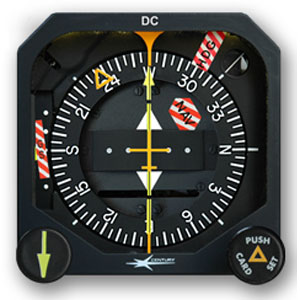Mark D
Filing Flight Plan
I've been seeing aircraft for sale listed as VFR planes, but the panels look to be IFR. Just curious what I might be looking at to get it certified, or if I even need to if I'm using the plane to get my IFR endorsement.
There is no separate aircraft "certification" requirement for IFR. In order to operate IFR, the aircraft must have the required equipment installed as listed in the FARs which must be functional and current.Just curious what I might be looking at to get it certified
That's not quite true. Older aircraft only need to be suitably equipped, but newer aircraft often has operating limitations that specifically preclude IFR or other than "DAY VFR" operations. You need to read the TCDS and the other aircraft documents to find out under what conditions you may fly it IFR.There is no separate aircraft "certification" requirement for IFR. In order to operate IFR, the aircraft must have the required equipment installed as listed in the FARs which must be functional and current.
Granted. But the original question was in reference to "certification" of an aircraft panel. There is no aircraft certification process when equipping an aircraft which operated VFR to operate IFR. As for limitations, that is what they are, limitations but not certifications. Most people think when they upgrade an aircraft to IFR capable they must "certify" it which is not the case.You need to read the TCDS and the other aircraft documents to find out under what conditions you may fly it IFR.
Hence my confusion on what I need in a plane to get my IFR endorsement. I've been researching more and more since I posted this question, and am understanding it better.Granted. But the original question was in reference to "certification" of an aircraft panel. There is no aircraft certification process when equipping an aircraft which operated VFR to operate IFR. As for limitations, that is what they are, limitations but not certifications. Most people think when they upgrade an aircraft to IFR capable they must "certify" it which is not the case.
Hence my confusion on what I need in a plane to get my IFR endorsement. I've been researching more and more since I posted this question, and am understanding it better.
Thanks for all the replies!
1. ILS*
2. LOC*
3. VOR
*Assuming one of the VOR receivers can tune to a localizer freq.
I've been seeing aircraft for sale listed as VFR planes, but the panels look to be IFR. Just curious what I might be looking at to get it certified, or if I even need to if I'm using the plane to get my IFR endorsement.
I have seen planes with what appeared to be good IFR equipment such as a Garmin GNS 430W installed, but I bought the FAA records on CD and saw that the paperwork on the installation had "VFR ONLY" written across it. This tells me that something about the installation fell short of the FAA's standards for instrument flight. It could be an unapproved antenna cable or it could be a required annunciator not being installed in the pilot's line of sight. And thus, it could be a cheap fix or a very expensive one. My rule was to pass on such planes and buy one that was already IFR-ready and fit my mission.
Don't you need a minimum of three approaches for the check ride? How many approaches is two VORs going to get you?
I did mine with only two VORs.
ILS
LOC
VOR
Same here. Also had a DME at the time. It failed on the flight home from the checkride. Not kidding. LOL.
We've since moved on to the GTN 650 in the panel, of course, but yeah... DME failed an hour after the Instrument checkride... hahaha... missed a minor bullet on that one, not that it would have been any big deal!
I have seen planes with what appeared to be good IFR equipment such as a Garmin GNS 430W installed, but I bought the FAA records on CD and saw that the paperwork on the installation had "VFR ONLY" written across it. This tells me that something about the installation fell short of the FAA's standards for instrument flight. It could be an unapproved antenna cable or it could be a required annunciator not being installed in the pilot's line of sight. And thus, it could be a cheap fix or a very expensive one. My rule was to pass on such planes and buy one that was already IFR-ready and fit my mission.



Wasn't a cat required?You guys had a vor? All I had was a bowl of water, a cork and a sewing needle I had rubbed on a magnet.
The first of those is also a CDI. Probably I will get nit-picked for saying this, but a VOR is a ground facility. You have a VOR receiver in the plane that receives the VOR signal and translates it into something that a display unit can show the pilot. The display unit could be an RMI, CDI, HSI, or other form (such as a graphical depiction on a HUD).I think we're wallowing in semantics here. I don't see how one can fly an ILS approach with one or two of these. (VOR)

However, you can fly the ILS with either one of these. (CDI,HSI)


And you had to keep a candle burning under the water in the winter to keep it from freezing.You guys had a vor? All I had was a bowl of water, a cork and a sewing needle I had rubbed on a magnet.
I think we're wallowing in semantics here. I don't see how one can fly an ILS approach with one or two of these. (VOR)

However, you can fly the ILS with either one of these. (CDI,HSI)


Those look complicated. I’m scared. Al those needles and flags and things.
Will you hold my hand?
No. You fly a Cessna, I could never be seen with someone who flies a Cessna.
Tim (could not resist)
And you had to keep a candle burning under the water in the winter to keep it from freezing.
Those look complicated. I’m scared. Al those needles and flags and things.
Will you hold my hand?
Couldn't afford a candle, had to pull my pants down and hold it between my thighs pressed to my nether region to keep it from freezing.
TMI.
Seriouly.
TMI

No...what other equipment are in the aircraft? Gotta be able to do a precision approach and two non-precision approaches...and do a landing....and some airwork...and stuff.So, do you need GPS equipment for an instrument checkride?
